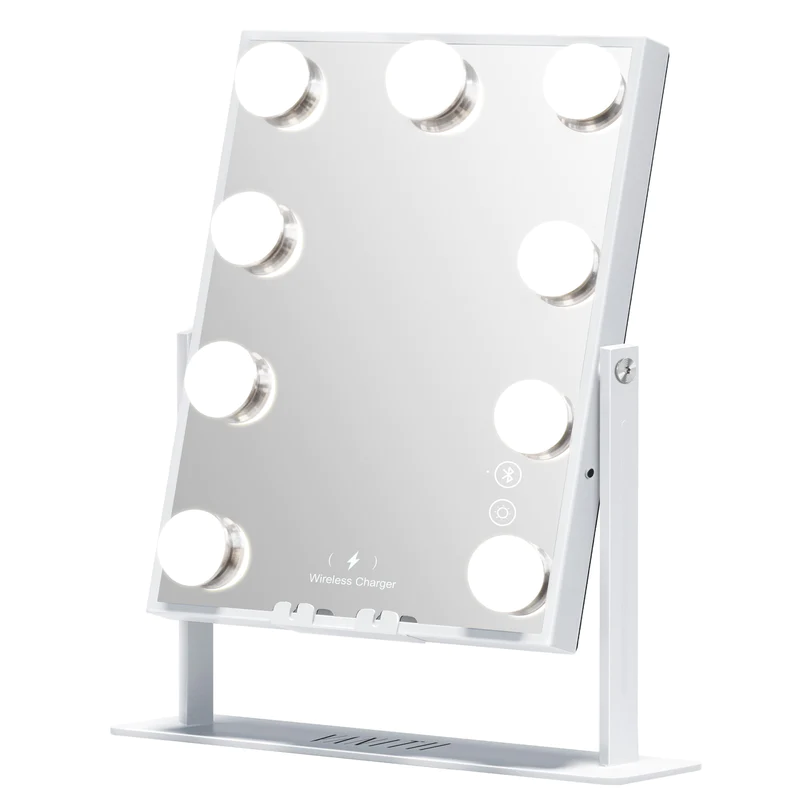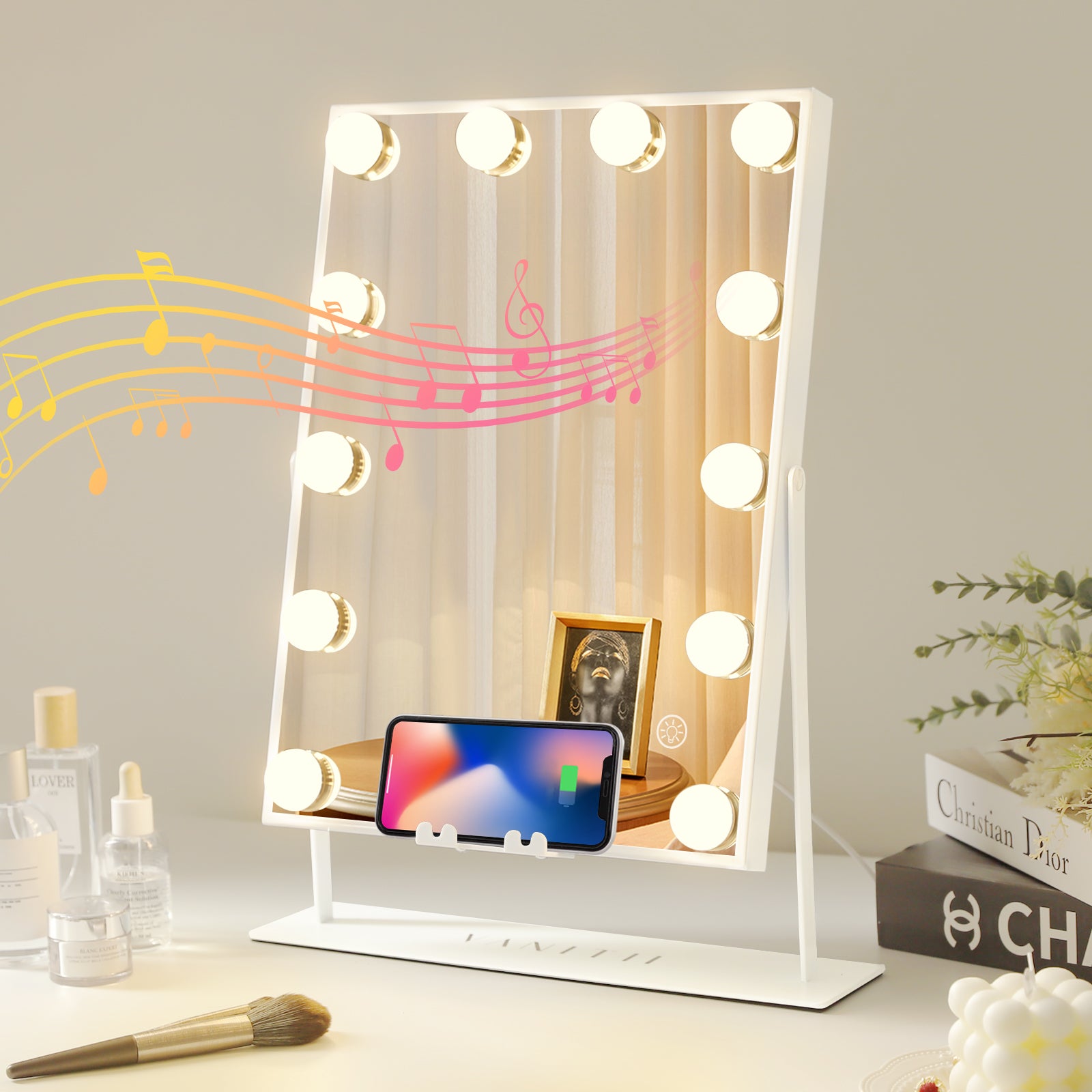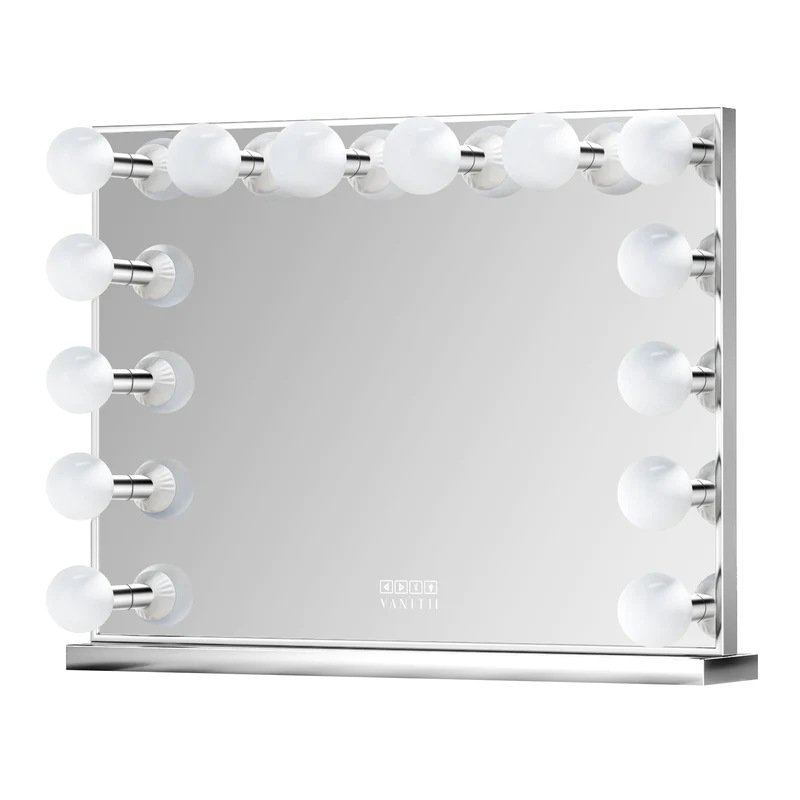Mirrors are essential tools for makeup application, allowing users to closely view and precisely apply cosmetic products. The material that a mirror is constructed from significantly impacts key traits like clarity, distortion, magnification capability, and durability, which in turn affect the ease and accuracy of applying makeup. This article evaluates common mirror materials used in vanity and professional makeup setups such as glass, acrylic, and polycarbonate in terms of optics, longevity, eco-friendliness, and cost, analyzing the advantages and tradeoffs of each material. It aims to help buyers determine the best material choice for their particular use case and budget to enhance their everyday makeup experience.
Overview of Mirror Materials in the Market
There are a variety of materials used to construct the mirrors essential for makeup application. Each material offers its own advantages and disadvantages regarding optical clarity, durability, weight, and other properties that impact the makeup experience.
1. Glass Mirrors
Traditional glass mirrors have been used for makeup applications for decades. They are constructed by coating a piece of pristine float glass with a silvery chemical backing, typically made from aluminum or silver.
Glass mirrors offer optimal optical clarity and true color representation with minimal distortion. The glass itself provides a very smooth and flat surface which allows users to see their faces accurately without aberrations. These clear optics make the application of makeup precise and efficient.
In addition, traditional glass mirrors are highly durable, scratch-resistant, and easy to keep clean, which suits the heavy-use needs of makeup enthusiasts and professionals. Their sturdiness also makes them a long-lasting investment compared to cheaper options.
On the downside, glass is prone to shattering and needs to be installed with proper mounting and positioning to avoid damage. The glass itself is typically heavy. And glass generally does not provide much magnification or adjustability.
2. Tempered Glass Mirrors
Tempered glass mirrors start as normal glass but go through special processing to make them extra strong and safer. Factories heat up the glass to very high temperatures, then cool it down quickly. This makes the glass harder inside so it resists breaking when dropped or hit.
The best benefit of tempered glass is that it is very difficult to shatter. Even if the mirror gets a hard impact or falls off the wall, the glass will not break into dangerously sharp shards. Instead, it cracks evenly into tiny rounded pieces like pebbles. This helps prevent people from getting badly hurt by the glass.
Another advantage over regular glass is that tempered glass mirrors resist scratches much better. Keys, jewelry, and other objects will have a hard time damaging or scuffing the surface. So tempered glass stays looking new for longer compared to normal mirrors.
In the end tempered glass mirrors provide safety from damage and lasting beauty that is perfect for makeup applications. Users get a material that is extremely hard to break, hard to scratch,
3. Acrylic Mirrors
Acrylic mirrors utilize plexiglass or similar plastic glass substitutes as the base material. These are coated with a mirrored backing like aluminum or silver to create a reflective surface.
Acrylic is lighter weight than real glass and has the benefit of being shatter-proof. This allows more flexible mounting options like hanging with adhesives. Being plastic, acrylic mirrors are impact-resistant and safer than glass around children.
From an optics standpoint, acrylic provides decent clarity but not to the level of true glass. There is some visible distortion around the edges as well. The plastic material also scratches more easily compared to glass or polycarbonate alternatives.
For professional artists, acrylic distortion and lesser color accuracy pose challenges for advanced makeup techniques. But for hobby and home use, acrylic's balance of good looks and safety makes it a popular choice.
4. Polycarbonate Plastic Mirrors
Polycarbonate is an extremely hardy type of plastic. In mirror form, it boasts similar properties: high strength yet lighter weight than glass, shatter and scratch resistance, and flexibility around mounting.
Makeup mirrors feature sleek polycarbonate on standalone vanities, adjustable panels, travel cases, and backlit options. While surface clarity falls slightly behind glass, polycarbonate offers unparalleled durability for high-traffic areas like studios.
Polycarbonate plastic mirrors match or exceed glass and acrylic options in critical aspects like longevity and safety. Their optical shortcomings are negligible for everyday makeup users. This optimal balance makes polycarbonate an emergent leader for both home and commercial use.
5. Specialty Mirror Materials
On the higher end of the mirror market, various enhanced coatings and rare metal backings are utilized to achieve ultimate clarity and true color replication. Materials like chrome, platinum, and specialized formulas of silver and aluminum create unmatched reflective quality.
These ultra-high-grade mirrors provide reference optics similar to professional photography and cinema equipment. While exorbitantly priced, specialty makeup mirrors build an aspirational beauty experience through near-perfect optical properties. Their specialized nature however means they are not mass-production friendly.

Key Factors in Evaluating Mirror Materials
The properties of various mirror materials each impact makeup application in different ways. Evaluating materials based on relevant criteria allows proper selection based on use cases.
1. Clarity and Color Accuracy
Clarity and true color representation are the most critical optical considerations for makeup mirrors. The user needs to see their skin tone and makeup shades without any haziness, distortion, or improper tinting.
Traditional glass and specially coated premium mirrors excel here by providing optics comparable to professional photography equipment. This allows precise evaluation of the technique. Standard acrylic and polycarbonate have slightly reduced clarity which may frustrate discerning users.
2. Distortion
The flatness and edge quality of a mirror influence how precisely a user can apply makeup. Any bubbles, ripples, or curvature in the material itself distorts reflected facial features.
Perfectly flat glass has the least real-world distortion. Polycarbonate plastic approaches this optical quality while remaining practically unbreakable. Lower-grade acrylic mirrors tend to have some inevitable edge distortion due to material properties.
3. Magnification Capabilities
Magnified mirrors ranging from 5x to 10x are coveted for detail work like eyeliner application and precision tweezing of brows. The underlying mirror material plays a key role in keeping optics clear and accurate when magnified instead of amplified distortions.
Glass remains the gold standard material backing for crisp magnification views without fish-eye effects or color issues. Some polycarbonate formulations also enable decent magnification, making mirrors both portable and detailed.
4. Durability and Longevity
Everyday users treat their makeup mirrors as a vital part of daily beauty regimens while professional artists subject theirs to heavy daily traffic from clients. Premium durability is therefore key to sustaining clarity and avoiding replaced mirrors.
Impact-resistant polycarbonate plastic mirrors lead the pack to durability. Their scratch resistance also outpaces acrylic. Specialty glass composite formulas also boast enhanced protection against chips and scratches compared to standard glass, holding up beautifully over years of use.

Application Settings: Choosing the Right Material for the Job
Different mirrors work best in different settings based on needs like cost, safety, and transportability. Tempered glass balances useful strengths across many daily environments.
1. Salons and Professional Studios
In salons enduring lots of customers, optical clarity matters but unbreakable materials like polycarbonate handle wear and tear. Still, enhanced composite glass blends offer sturdy clarity for precision work. Here tempered glass is an ideal middle ground - professionally optic but with strength exceeding standard glass. The extra safety tempering provides for slip-prone spaces like countertops is a bonus.
2. Personal Vanity Mirrors
For home use, tempered glass mirrors provide affordable investment-quality optics for beauty routines. The strength of tempered glass assuages worries about kids and pets interacting with vanities. Lighted variants and magnification offer helpful functionality that preserves tempered resilience. If frequently traveling with mirrors, tempered materials withstand transportation jostling better than standard glass.
3. Educational Settings for Makeup Artists
Glass remains an optimal teaching material for schools with its true color representation and crisp optics. Recently enhanced polycarbonate formulas also combine clarity rivaling glass with extreme classroom resistance against scratches and drops.
For cost considerations, bulk orders of either standard glass or polycarbonate offer the best combination of quality and affordability. Seeking out materials with minimal edge distortion also aids in precision student technique training.
Choosing the Right Makeup Mirror Material
The ideal makeup mirror material balances optical clarity for precise application with durability and affordability for greater access. Traditional glass sets standards in distortion-free reflection. Tempered glass is an optimal middle ground, offering professional-level resolving power but with the impact strength to handle heavy use in salons, homes, and other situations. As innovation advances mirrored polymers, these unbreakable, crystal-clear surfaces increasingly democratize access to pro-level makeup mirror performance with durable optics lasting years via excellent clarity and resilience.




Leave a comment
This site is protected by hCaptcha and the hCaptcha Privacy Policy and Terms of Service apply.